Bed sheets and mattress must be in cahoots, because we can’t really have a decent night’s sleep if both of them aren’t of the utmost comfort. The variety of sheets that are currently available for purchase can be satisfying to some, but confusing for others. Terms like weave, Percale, thread count, what do they all mean? How isn’t this simpler?! No worries, we’re going to teach you the sheet-shopping alphabet, so you’ll know where to look and what to look for.
Contents
Materials
Choosing a pair of good bed sheets is more than just picking your favorite color and the right size for your mattress. It’s understanding what different sheets are made from and determining which one is best for your skin and bedroom environment.
Cotton
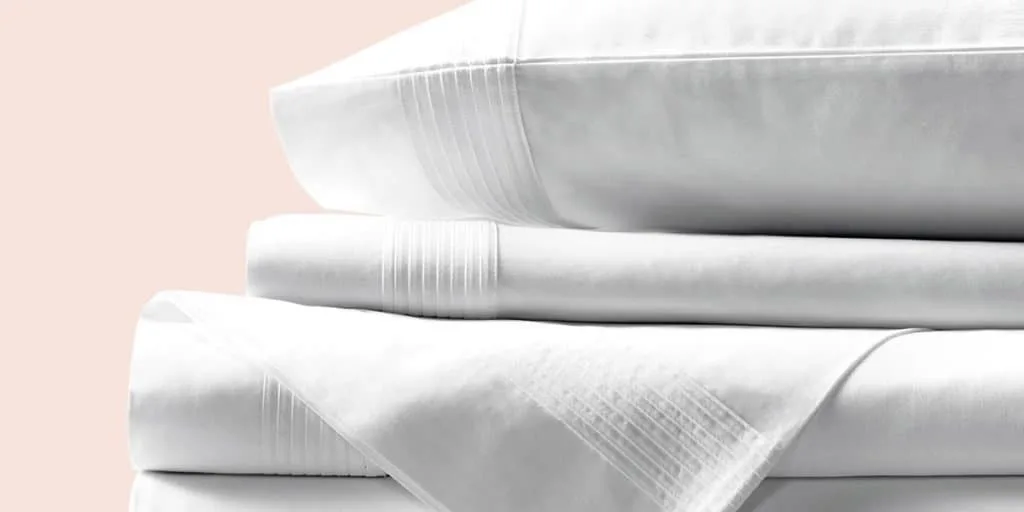
Since forever, cotton has been the most popular bed sheet material around. It’s soft and durable, rarely causing any skin irritations or rashes and it’s very easy to care for. But cotton is also available in a lot of different types, which makes the shopping process even more complicated. Here’s what you need to know about the different types of cotton:
- Egyptian cotton is considered to be the most luxurious type of cotton, which also makes it the most expensive. When you’re looking to buy high-quality bed sheets, Egyptian cotton is your best bet. This cotton grows in the dry and warm climate of Northern Africa and is characterized by long fibers that are both smooth and soft.
- Upland cotton is an American native, with fibers that are shorter than Egyptian cotton ones, which makes it a little less soft. It is also the most common type of cotton used in manufacturing bed sheets, so if you ever come across a bargain price, know that those sheets are most likely made with Upland cotton.
- Pima cotton is the next best thing after Egyptian cotton. Its fibers are also long and have a natural sheen. Pima cotton sheets are really soft and pleasant to the touch. The cotton itself is native to the southwest part of the US.
- Supima is trademark for materials and fibers made with America Pima cotton.
- MicroCotton is also a trademarked name for an Indian fine cotton thread. MicroCotton is durable and very soft.
See Some of the best Cotton Sheets Reviews here:
- The Brooklinen Bedding Review
- The Weighting Comforts Blanket Review
- The Boll and Branch Sheets Review
- Boll and Branch vs Parachute Home
Tencel
A lot of you have heard about Tencel, a fabric made from wood pulp extracted from eucalyptus trees. Tencel is a material used in mattress covers, because it has natural antimicrobial properties, but also because it’s highly durable. Being an environmentally-friendly fabric, Tencel has become quite popular amongst nature lovers. Producing Tencel consumes less water and energy compared to cotton. Even if Tencel feels cool the first time you touch it, the material is not as breathable as cotton.
Flannel
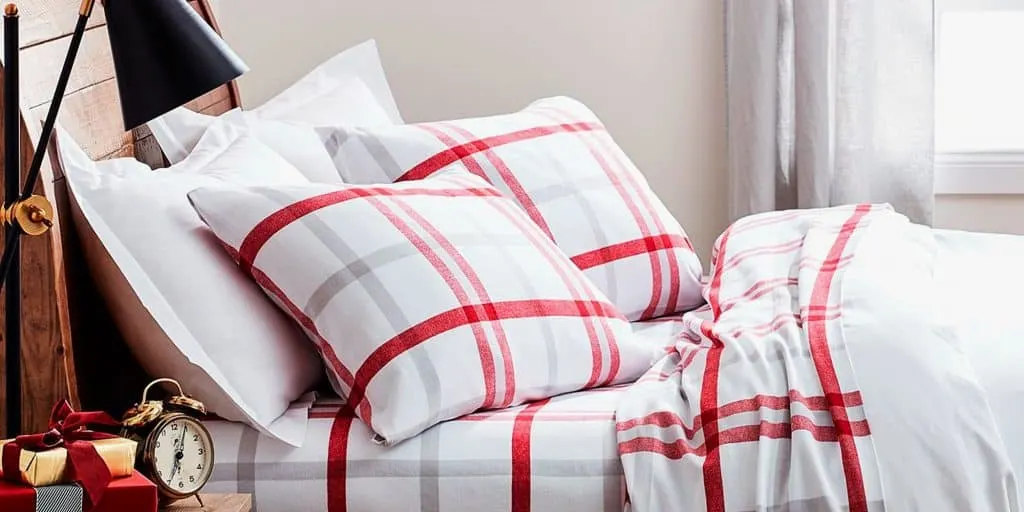
This is a material that’s very popular in the winter, especially with the ladies that like to cuddle up inside a pair of soft and warm bed sheets after a long cold day. Flannel sheets are characterized by fluffy fibers that retain the body’s heat and making it feel snuggly and warm throughout the night. Typically, the quality of a sheet is measured by its thread count, but with flannel sheets, it’s measured in ounces per square yard.
Polyester
This man made fiber comes from the polymers that are typically used to make plastic drinking bottles. Polyester sheets aren’t the most comfortable ones of all, but they are rather inexpensive compared to ones made from softer fabrics. Polyester sheets will typically have another thread added to the mix, which is most likely some form of cotton. You will sometimes encounter microfiber which is actually finely woven polyester. Even if you manage to come across soft polyester sheets, they are less breathable than cotton, being a less preferred choice for people who tend to sleep hot. However, there are a lot of people who choose polyester sheets for their low price and their durability.
Bamboo
There is a lot of debate on whether bamboo sheets are really comfortable or not. Bamboo is considered to be stiff and rough, even if it can be turned into a fabric. Some manufacturers actually sell rayon sheets and label them as bamboo. This is an indicator of a more complex process that dissolves the bamboo pulp, re-solidifies it and spins it into thread. It’s really a shame that something as natural as bamboo has to go through this entire chemical process that’s not only hard on the environment, but creates a toxic product that you have to sleep on. Even if the result is a silky and smooth fabric, it’s more toxic than the manufacturer’s care to recognize.
Silk
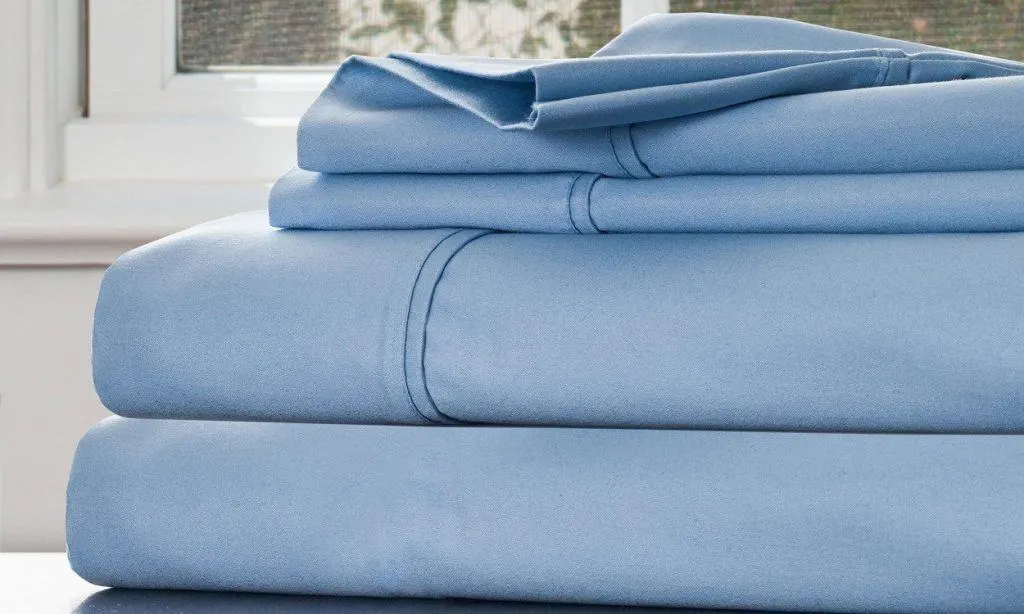
Since forever, silk has been known for its luxurious feel. Silk is produced by silkworms and has been an emblem of romantic bedrooms for quite some time now. It’s rare for some other fabric to be able to beat the silky sensation and the cooling properties of silk. Aside from being considered a sensual fabric, silk is also naturally hypoallergenic. However, it’s also a very expensive material, which puts silk bed sheets close to the top of the luxury ladder.
Thread Count & Plying
A lot of manufacturers claim that their bed sheets have astronomical thread counts, which make them the best products of their kind. But once you understand what thread count really is, it might put things into a different perspective. Thread count is a phrase that you will often come across when you’re shopping for bed sheets, but it’s important to understand why a high thread count doesn’t always indicate a softer sheet. A thread count is the results of both the horizontal and the vertical threads that are found inside a square inch of material.
But thread count is just one piece of the puzzle, as we must also explain what plying means and how it can contribute to the quality of a bed sheet. When multiple yarn strands are twisted together to create a single thread, the process is described as plying. Fabrics that are made with a single ply feature individual threads, resulting in a material that’s lightweight. Two-ply fabrics are heavier.
Here’s where manufacturers manage to trick their customers. They calculated the thread counts by including both of the thread pieces used to make two-ply sheets. For instance, a real thread count of two-ply sheets would often be “translated” as a 500 thread count on the label. If a particular set of bed sheets was made with a four-ply, manufacturers would go as far as mentioning that their products had a thread count of 1,000. In order to prevent misleading the consumer, the Federal Trade Commission stepped in and stated that thread count should only be calculated as a single thread.
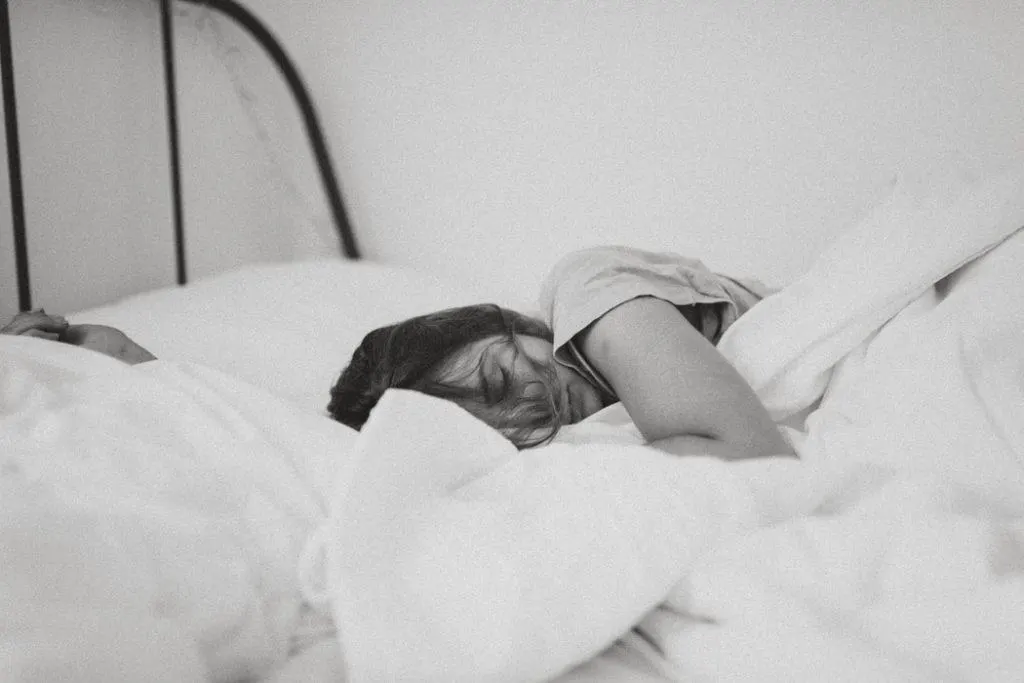
In determining the quality of a fabric that’s used to make bed sheets, one must also take into account the quality of the actual fibers that are used to make that fabric. When it comes to bed sheets, the length of the fiber is a determining factor. Two-ply threads are created by twisting together fibers, which eventually leads to a looser weave. With a shortened lifespan, such a weave is rougher and heavier.
With this information, you can filter out some of the marketing BS that promises amazing quality and bed sheets with 1,000 thread count. Let’s do an exercise. If you have to choose between a set of bed sheets with a thread count of 400 and two-ply and another set of sheets with a single-ply and a thread count of 250, the latter option is a better one. That’s because the single ply guarantees a fabric of a much higher quality compared to the two-ply one, even if the thread count is lower.
Staple Length
Wait, you didn’t think explanation time was over, did you? We like to keep you informed so you’ll have all the necessary data to avoid getting ripped off by brands that promise luxury that isn’t real. We’ve already established that cotton is the most common material used in the manufacturing of bed sheets. We have also established that not all cotton is the same. When you pull apart a cotton ball, there are fibers of different lengths inside it. This length is also referred to as staple and it’s an important factor that helps us determine the quality of the cotton.
- Short staple fiber is typically 1 ⅛ inches long and it’s the lowest quality staple available.
- Long staple fibers have a much higher quality and are at least 1 ¼ inches long.
- An extra-long staple fiber is of the finest quality and measures between 1 ⅜ and 2 inches in length.
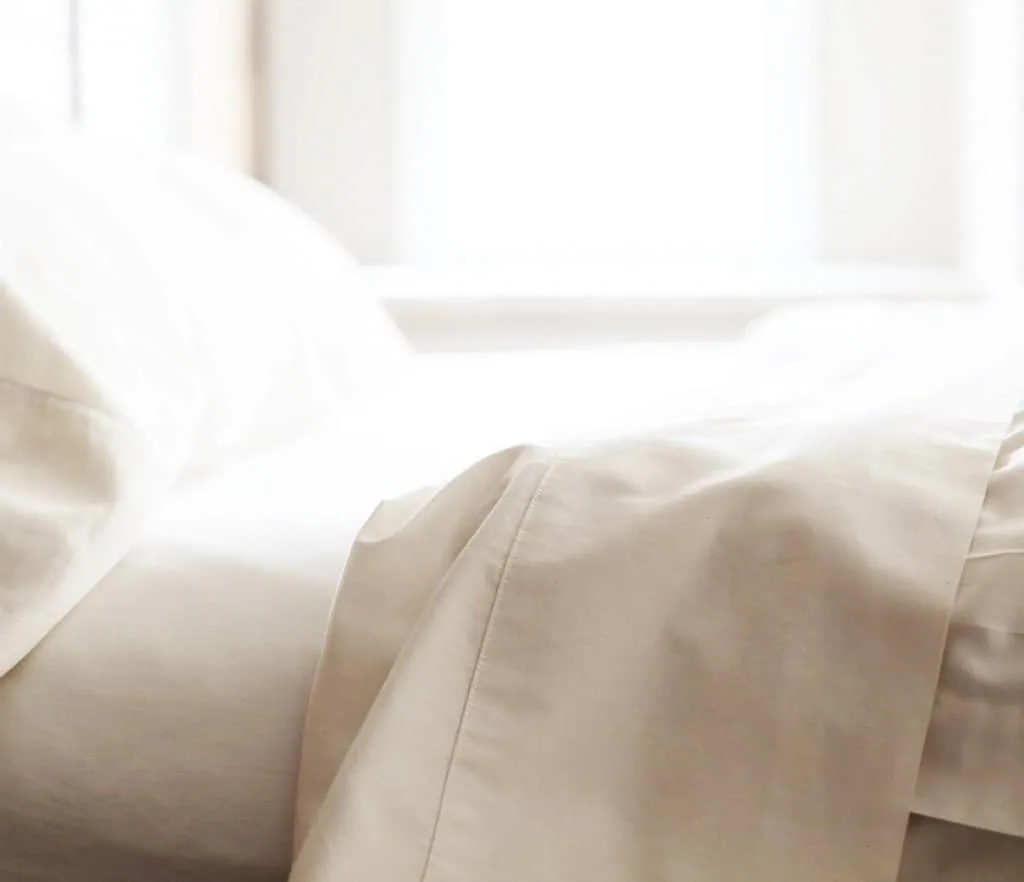
Different types of cotton will have different staple length, so let’s review them one more time, but this time, matching the type with the fiber length:
- Egyptian cotton is of the highest quality, which means it has the longest and the finest staple. The result is a luxurious and durable pair of sheets. In the past, Egyptian cotton sheets were only available in the more expensive stores. Always make sure you read the label, so you don’t get ripped off when looking to buy these sheets. The thread count for Egyptian cotton sheets is generally high because they use a thin staple.
- Upland cotton sheets are made with shorter staple fibers, but they are also the most common ones found in US households.
- Pima cotton uses long staple fibers and are made with a soft weave and fine sheen.
Understanding Weave
Weaving is a process used to manufacture textiles where two different sets of threads or yarn are interwoven at specific angles and results in cloth of fabric. Two very common terms in the world of weaving and warp and weft. The warp is the vertical thread, while the weft is the horizontal one. So, the weave is the result of the intertwining between the warp and the weft. Most of the woven products that are available on the market are created with either of these basic weaves: twill, satin or plain.
Percale
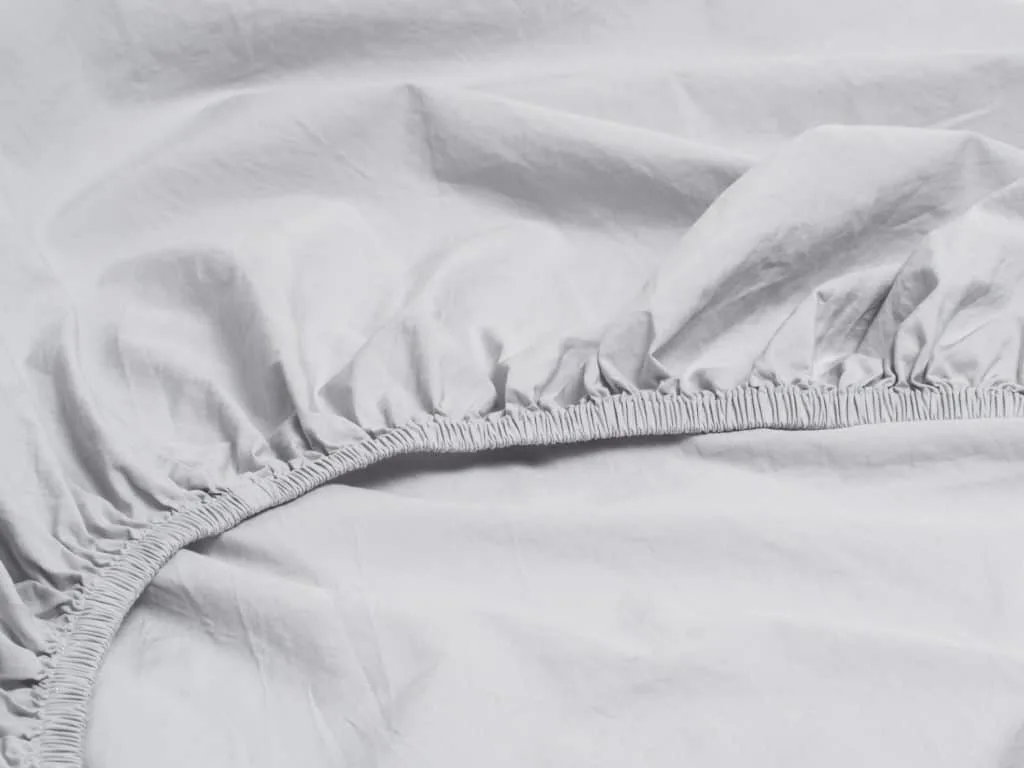
This is the most common type of bed sheet weave. It can be recognized because of its crisscross pattern that leads to identical surface thread on both sides. Percale bed sheets are known for being durable and lightweight, but they are a bit rough to the touch. Percale sheets typically have a matte finish.
Twill
Twill weaving is easily recognizable due to its diagonal lines that resemble a denim style. Bed sheets made with a twill weave are durable and strong.
Sateen
When you come across a bed sheet made with a sateen weave, you will notice that it has a higher number of fibers across its surface. Their major downside is the fact that they are prone to sagging, but other than that, they have a luxurious feel and look very shiny.
Dobby
A dobby weave is easy to recognize because it typically features a pattern that’s visible on the sheets. A dobby woven set of bed sheets generally has stripes or dots.
Jersey
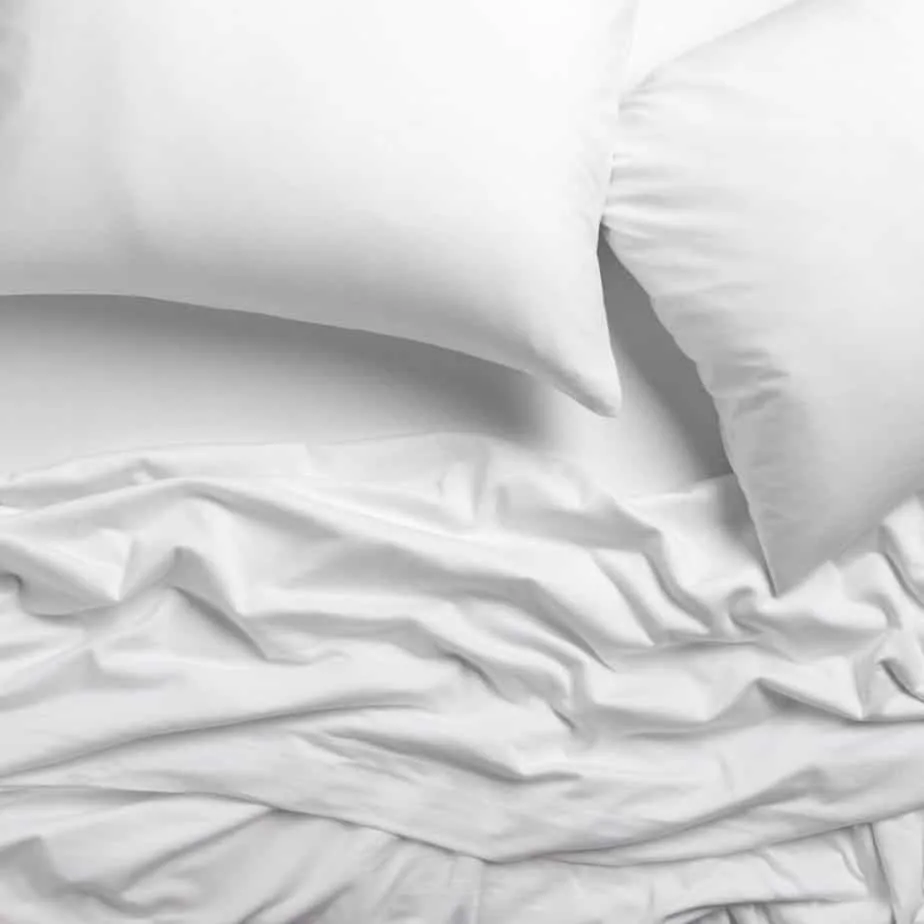
Contrary to all the other types of weaves, a pair of Jersey bed sheets is actually finely knitted, not woven. These appear more casual compared to other types of sheets and are very elastic.
If you come across a pair of sheets that doesn’t offer any specific information on the type of weave used in the manufacturing process, that means the product has a basic weave. This translates into the same number of threads in both the warp and the weft. But for bed sheets, the most common types of weaves are percale and sateen. Of course, this brought to light yet another debate: are percale sheets better than sateen?
First off, your bedroom environment is an important part of answering that question. Compared to sateen, percale sheets help you sleep cooler. That’s because the weave of percale sheets allows for more air to pass through the openings and doesn’t trap the heat released by your body. People are often tempted to purchase sateen sheets because of that cool impression that’s given at first sight, but truth of the matter is that sateen retains body heat. Percale is also more durable than sateen. One thing you may not have known about percale is that the material gets softer each time you wash it and it’s more resistant to pilling.
Finding the Best Sheets Online
This subsection may be a little futile for some of our readers, as all the above information has some clear points on what to look for when purchasing a pair of bed sheets, but let’s give you a quick “too long, didn’t read” recap. How can you be sure you’re purchasing the best sheets, even when shopping for them online?
- Determine what are the primary things you’re looking for in a set of bed sheets. Are you interested in durability? Do you want them to be soft? Is airflow and cooling more important than anything else? How about the toxicity: should your next set of bed sheets be chemical-free? All of these answers will determine a list of priorities that will take you one step closer towards choosing the ideal set of bed sheets.
- Thread count is important, but it’s not the only thing that matters. Don’t be fooled by astronomical thread counts. Most of the times, bed sheets with a thread count of 400 are more than enough for your comfort.
- Always make sure you add the right bed sheet size to your shopping cart, especially if the set includes a fitted sheet. The side of your mattress is the ultimate guide to help you avoid making any size-related mistakes.
- Of course, the material of the sheet is super important, but it mostly goes hand-in-hand with the purpose of the sheets. Egyptian cotton is for luxury, silk is for sensuality and a percale weave will help you sleep cooler. Oh, and if you want that snuggly and cozy warm feel in the colder season, flannel bed sheets are definitely the right choice for you.
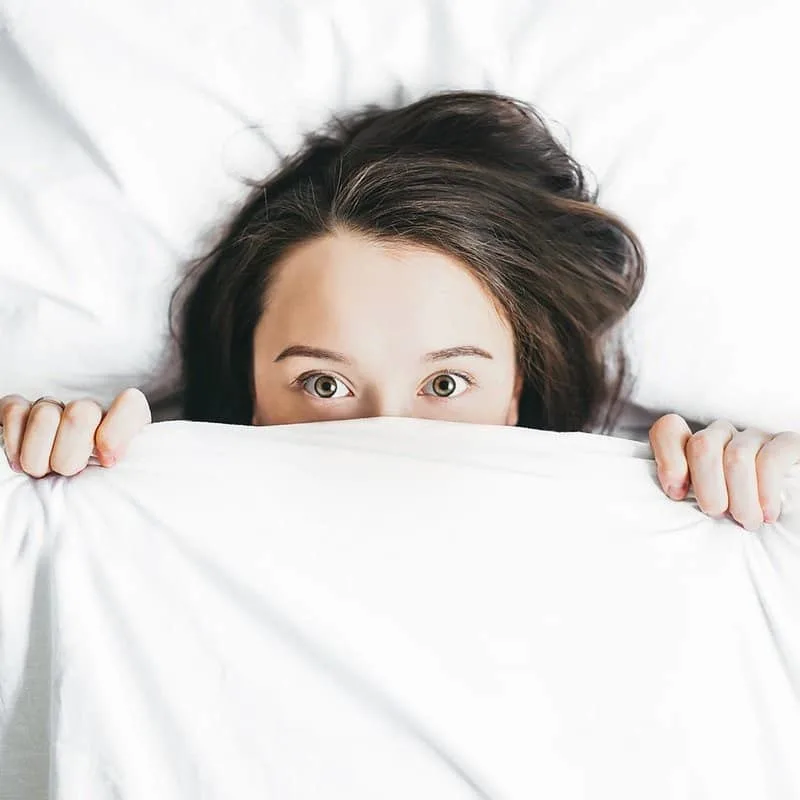
See Here More Bedding Comparisons and Reviews:
Conclusion
If you don’t want to compromise the quality of your sleep, then staying informed before purchasing just any random set of bed sheets is crucial to ensuring you feel well rested the next day. It’s not just a bad mattress that can be a deal-breaker, but sleeping on sheets that run too hot, feel too crisp or come apart after the third wash is a definite no-no. The guide above is meant to give you heads-up on the different types of materials that are used in manufacturing bed sheets. By understanding the ups and downs of each, you will have a much better idea of what type of bed sheets better suit your style. And since we’re talking online purchase, why not look for bed sheets with a generous return window, so you can have some time to determine if a particular brand, a fabric or a weave are the right ones for you.

